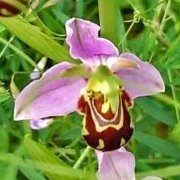Hi Phil Green,
Thank you for your post and feedback.
I do understand your comments, but writing and editing large works is not as simple a task as you seem to appreciate.
There may well be a spelling mistake on page 133 and also on page 470, but remember, this is out of 250,000 words and over 1,400 pages (in the case of Sarraceniaceae of North America and Sarraceniaceae of South America).
I do employ an editor full time, and send each book for proofing by at least two professional proof readers at a cost of thousands and thousands of pounds per book so that each manuscript is read by several people before going to press. I also personally read through each manuscript at least 3 times. But nevertheless, a typo or other minor mistake does sneak through, as you have publicly pointed out, for example, "putrative".
Please try editing through 1,400 pages to produce a flawless result. It is not easy, and mistakes such as a single "r" in a word, will, I suspect, slip pass even your eyes. Especially after reading so many pages three times.
Ultimately, I cannot excuse typos and mistakes, and freely admit there are a few in all of the books I have written. But I do reject your quite hurtful claim that the books are "littered" with mistakes. This is not the case. There are 300 pages between the errors you identified on page 133 and page 470, representing perhaps 30,000 words. This is the length of a regular-size book.
I certainly cannot excuse an extra "r" in putrative, or other minor issues. But I am only human, and so are all editors and proof readers (as far as I know). The issues which you identified are all certainly very minor, and do not detract from the concept of the titles, which focus on documenting the diversity, ecology and conservation of carnivorous plants.
With regards to "rushing". The Sarraceniaceae books took a decade of research on my part, and 40 years on Donald Schnell's part, and an entire year of continuous writing by myself. I delayed publication several times for editing. The reality is though, the economics of printing such a book raises sufficient funds to employ editors for a finite time. I wish it were different, but these titles are very specialised, and unfortunately do not have Harry Potter budgets to employ large teams of editors.
You should also remember that, in the case of the Sarraceniaceae books, these involved authors of several countries, speaking multiple languages and dialects (German, UK English and American English), and with many different writing styles.
At the end of the day, you are right, and I am wrong. There is the odd spelling mistake in my books. But I have spent thousands and thousands of hours on each title to produce each one to the highest standard I possibly can.
Stewart McPherson







.jpg.9186966b7f48ae927d6b49c17029f256.thumb.jpg.182595626cef6791146ff913abb203bd.jpg)
